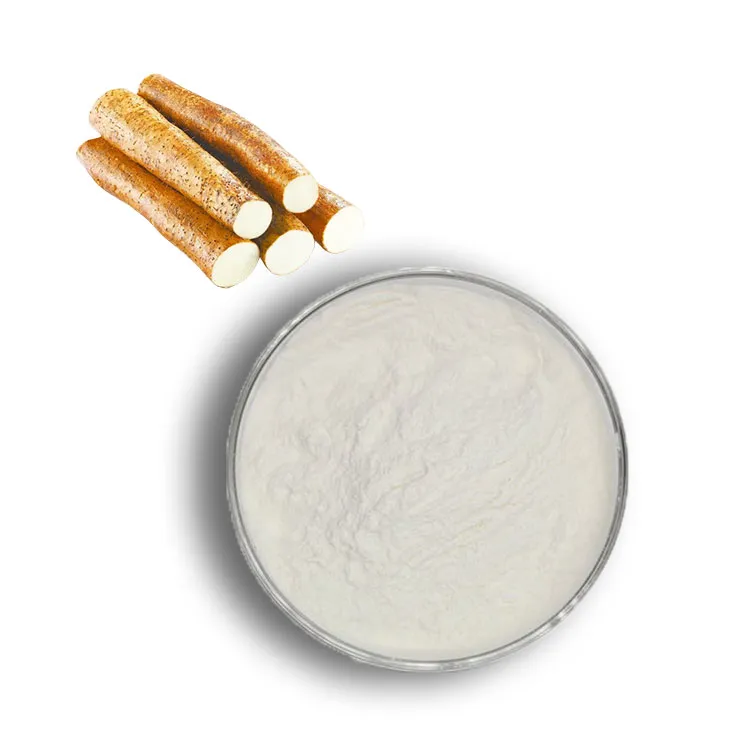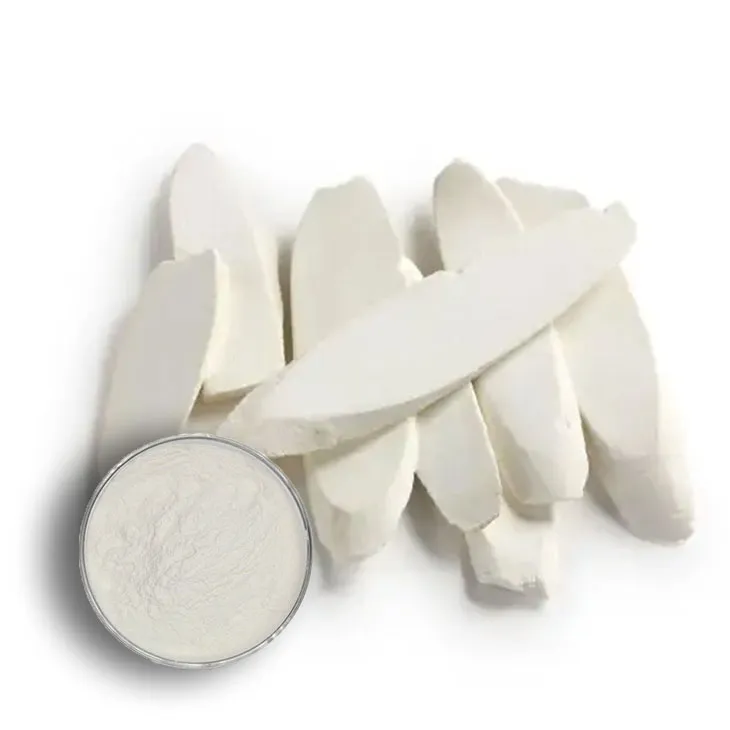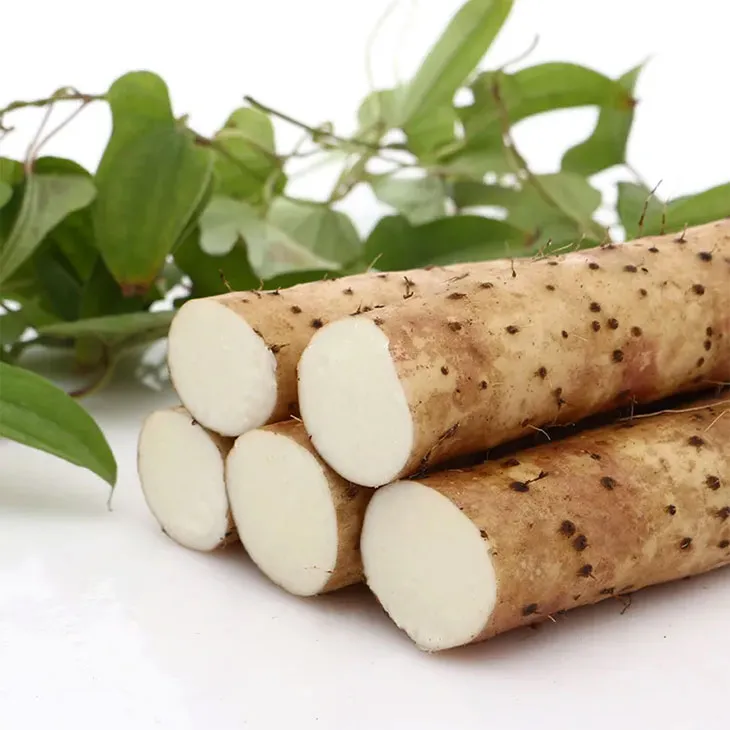- 0086-571-85302990
- sales@greenskybio.com
The best method for extracting yam extract.
2024-11-26

1. Introduction
Yam is a valuable plant with numerous health - promoting properties. Extracting Yam Extract effectively can unlock its potential for various applications, such as in the pharmaceutical, food, and cosmetic industries. Efficiency, purity, and cost - effectiveness are crucial factors when considering the extraction method. This article will delve into different extraction techniques and analyze their advantages and disadvantages to determine the best approach.

2. Traditional Extraction Methods
2.1. Solvent Extraction
Solvent extraction is one of the most common traditional methods. It involves using solvents to dissolve the active components from the yam.
- Advantages:
- It can extract a wide range of compounds. Different solvents can be selected based on the solubility of the target compounds. For example, polar solvents like ethanol are effective in extracting polar substances present in yam.
- Relatively simple equipment can be used, which is cost - effective in some small - scale extractions.
- Disadvantages:
- The choice of solvent is crucial. Some solvents may be toxic, and complete removal of the solvent from the final extract can be challenging. Residual solvents can pose a risk in applications such as food and pharmaceuticals.
- The extraction process may be time - consuming, especially when aiming for high purity.
2.2. Maceration
Maceration is a process where the yam is soaked in a solvent for an extended period.
- Advantages:
- It is a relatively gentle method that can preserve the integrity of some heat - sensitive compounds in yam. For example, certain bioactive enzymes may remain active after maceration.
- Simple to perform and does not require complex equipment. It can be carried out at room temperature in many cases.
- Disadvantages:
- It is a slow process. Long soaking times are often required to achieve sufficient extraction, which can lead to the growth of microorganisms if proper precautions are not taken.
- The extraction efficiency may be relatively low compared to other methods, especially for compounds with low solubility in the chosen solvent.

3. Modern Extraction Technologies
3.1. Supercritical Fluid Extraction (SFE)
Supercritical fluid extraction uses a supercritical fluid, most commonly carbon dioxide (CO₂), as the extraction solvent.
- Advantages:
- CO₂ is non - toxic, non - flammable, and environmentally friendly. It leaves no harmful residues in the final extract, making it highly suitable for applications in the food and pharmaceutical industries.
- The extraction can be carried out at relatively low temperatures, which helps to preserve the thermally labile compounds in yam. For instance, some vitamins and essential oils in yam can be extracted without significant degradation.
- Supercritical CO₂ has a high diffusivity, which enables it to penetrate the yam matrix quickly and extract the desired compounds efficiently. This can lead to a relatively short extraction time compared to traditional solvent extraction methods.
- Disadvantages:
- The equipment for supercritical fluid extraction is expensive. This high cost can be a significant barrier for small - scale producers or research facilities with limited budgets.
- Operating the equipment requires specialized knowledge and skills. Maintenance and operation of the system can be complex.
3.2. Ultrasonic - Assisted Extraction (UAE)
Ultrasonic - assisted extraction utilizes ultrasonic waves to enhance the extraction process.
- Advantages:
- The ultrasonic waves create cavitation bubbles in the solvent. When these bubbles collapse, they generate intense local heating and pressure, which helps to break the cell walls of the yam more effectively. This can significantly improve the extraction efficiency of active compounds.
- It can reduce the extraction time compared to traditional methods. For example, in some cases, the extraction time can be reduced from hours (in traditional methods) to minutes.
- The method can be combined with other extraction techniques, such as solvent extraction, to further enhance the extraction performance.
- Disadvantages:
- There may be some degradation of certain compounds due to the high - energy ultrasonic waves. Although this is not always significant, it needs to be considered for some sensitive applications.
- The ultrasonic equipment also has a certain cost, and proper calibration and maintenance are required to ensure consistent performance.
3.3. Microwave - Assisted Extraction (MAE)
Microwave - assisted extraction uses microwaves to heat the solvent - yam mixture.
- Advantages:
- It is a very fast extraction method. Microwaves can directly heat the polar molecules in the solvent and the yam, leading to rapid extraction. In some cases, the extraction can be completed within a few minutes.
- It can improve the selectivity of extraction. By adjusting the microwave power and extraction time, different compounds can be preferentially extracted.
- Disadvantages:
- There is a risk of overheating, which can cause the degradation of some heat - sensitive compounds. For example, some bioactive peptides in yam may lose their activity if overheated.
- The microwave equipment also requires a certain investment, and proper safety precautions need to be taken during operation due to the use of microwaves.

4. Comparison of Different Extraction Methods
Efficiency:
- Among the traditional methods, solvent extraction can be relatively efficient for certain compounds, but it often requires long extraction times. Maceration is the least efficient in terms of time - consumption.
- Among modern methods, supercritical fluid extraction (SFE) has high efficiency due to the high diffusivity of supercritical CO₂. Ultrasonic - assisted extraction (UAE) and microwave - assisted extraction (MAE) also show high efficiency as they can significantly reduce the extraction time compared to traditional methods.
- Traditional solvent extraction may have purity issues due to the potential presence of residual solvents. Maceration may introduce impurities from the slow extraction process and possible microbial growth.
- Modern methods like SFE can achieve high purity as it leaves no harmful residues. UAE and MAE also have good potential for high purity, but proper control of parameters is required to avoid compound degradation.
- Traditional methods like maceration are cost - effective in terms of equipment cost, but they may be less so in terms of overall efficiency and product quality. Solvent extraction has a medium cost - effectiveness considering the cost of solvents and potential purification steps.
- Modern methods such as SFE are expensive in terms of equipment and operation, which makes it less cost - effective for small - scale operations. UAE and MAE have a medium - high cost due to the equipment, but their high efficiency can offset this to some extent in large - scale production.

5. The Best Method for Different Scenarios
Small - scale and Research Purposes:
- For small - scale extractions or in research settings where the focus is on exploring the properties of Yam Extract, ultrasonic - assisted extraction (UAE) can be a good choice. It has relatively lower equipment cost compared to supercritical fluid extraction (SFE), and it can provide relatively high - quality extract in a short time. It is also easy to operate and can be adjusted for different extraction requirements.
- When large - scale production with high - purity requirements is needed, supercritical fluid extraction (SFE) is the most suitable method. Despite its high cost, it can produce a pure extract without harmful residues, which is crucial for applications in the pharmaceutical and high - end food industries. The long - term cost - effectiveness can be high in terms of product quality and market acceptance.
- For applications where cost is a major concern and moderate - quality extract is acceptable, traditional solvent extraction with proper solvent selection and purification steps can be considered. It can be optimized to balance cost and quality, although it may not achieve the highest purity or efficiency.
6. Conclusion
There is no one - size - fits - all best method for extracting Yam Extract. The choice depends on various factors such as scale of production, purity requirements, and cost - effectiveness. Traditional methods like solvent extraction and maceration still have their places in certain situations, while modern methods like supercritical fluid extraction, ultrasonic - assisted extraction, and microwave - assisted extraction offer new possibilities with their unique advantages. By carefully considering these factors, producers and researchers can select the most appropriate extraction method to meet their specific needs.
FAQ:
What are the main factors to consider when choosing a yam extract extraction method?
When choosing a yam extract extraction method, several main factors need to be considered. Firstly, efficiency is crucial. A high - efficiency method can extract a sufficient amount of yam extract in a relatively short time. Secondly, purity is also very important. The extracted yam extract should have a high purity level to ensure its quality and effectiveness in various applications. Cost - effectiveness is another factor. The extraction method should not be too costly in terms of raw materials, equipment, and energy consumption. Additionally, environmental friendliness and simplicity of the operation process also play a role in the selection of the extraction method.
How does the traditional extraction method compare to modern extraction methods in terms of yam extract extraction?
The traditional extraction methods for yam extract, such as solvent extraction, have been used for a long time. They are relatively simple in operation but may have some limitations. For example, they may not be very efficient in extracting all the active components, and the purity may not be as high as expected. Modern extraction methods, on the other hand, such as supercritical fluid extraction and microwave - assisted extraction, offer some advantages. Supercritical fluid extraction can achieve high - purity extraction with relatively mild conditions and less solvent residue. Microwave - assisted extraction can significantly improve extraction efficiency by using microwave energy to accelerate the extraction process. However, modern methods may require more complex equipment and higher costs.
Can the extraction method affect the bioactivity of yam extract?
Yes, the extraction method can have a significant impact on the bioactivity of yam extract. Different extraction methods may result in different compositions and structures of the extracted components. Harsh extraction conditions in some methods may cause the degradation or denaturation of active substances in yam, thus reducing their bioactivity. For example, if excessive heat or strong solvents are used, some heat - sensitive or solvent - sensitive bioactive components may be damaged. On the contrary, a proper extraction method that can preserve the integrity of active components can ensure the high bioactivity of yam extract.
What are the steps involved in a typical efficient yam extract extraction method?
A typical efficient yam extract extraction method may involve several steps. First, the yam material needs to be properly prepared, which may include cleaning, drying, and grinding to an appropriate particle size. Then, depending on the extraction method, for example, in solvent extraction, a suitable solvent is selected and the yam powder is mixed with the solvent in a certain ratio. The mixture is then subjected to extraction conditions such as agitation and heating for a certain period to ensure the dissolution of the target components. After extraction, the extract is separated from the solid residue, usually by filtration or centrifugation. Finally, the solvent may be removed from the extract, for example, by evaporation, to obtain the yam extract in a more concentrated form.
How to ensure the purity of yam extract during the extraction process?
To ensure the purity of yam extract during the extraction process, several measures can be taken. Firstly, the quality of the raw yam material should be carefully controlled. High - quality yams with fewer impurities are preferred. Secondly, in the extraction process, appropriate extraction methods and solvents should be selected. For example, some solvents can selectively dissolve the target components while leaving most of the impurities behind. Additionally, purification steps can be added after the initial extraction. For example, chromatography techniques can be used to further separate and purify the extract to remove any remaining impurities.
Related literature
- Advanced Techniques for Yam Extract Production"
- "Optimization of Yam Extract Extraction: A Review"
- "Comparative Study on Different Yam Extract Extraction Methods"
- ▶ Hesperidin
- ▶ Citrus Bioflavonoids
- ▶ Plant Extract
- ▶ lycopene
- ▶ Diosmin
- ▶ Grape seed extract
- ▶ Sea buckthorn Juice Powder
- ▶ Fruit Juice Powder
- ▶ Hops Extract
- ▶ Artichoke Extract
- ▶ Mushroom extract
- ▶ Astaxanthin
- ▶ Green Tea Extract
- ▶ Curcumin
- ▶ Horse Chestnut Extract
- ▶ Other Product
- ▶ Boswellia Serrata Extract
- ▶ Resveratrol
- ▶ Marigold Extract
- ▶ Grape Leaf Extract
- ▶ New Product
- ▶ Aminolevulinic acid
- ▶ Cranberry Extract
- ▶ Red Yeast Rice
- ▶ Red Wine Extract
-
Cranberry Extract
2024-11-26
-
Polygonum Cuspidatum Extract
2024-11-26
-
Medicinal Marshmallow Extract
2024-11-26
-
Wheat Germ Extract
2024-11-26
-
Oyster Mushroom Extract Powder
2024-11-26
-
Konjac Powder
2024-11-26
-
Thunder God Vine Extract
2024-11-26
-
Clove Powder
2024-11-26
-
Sea buckthorn oil
2024-11-26
-
Resveratrol extract
2024-11-26





















